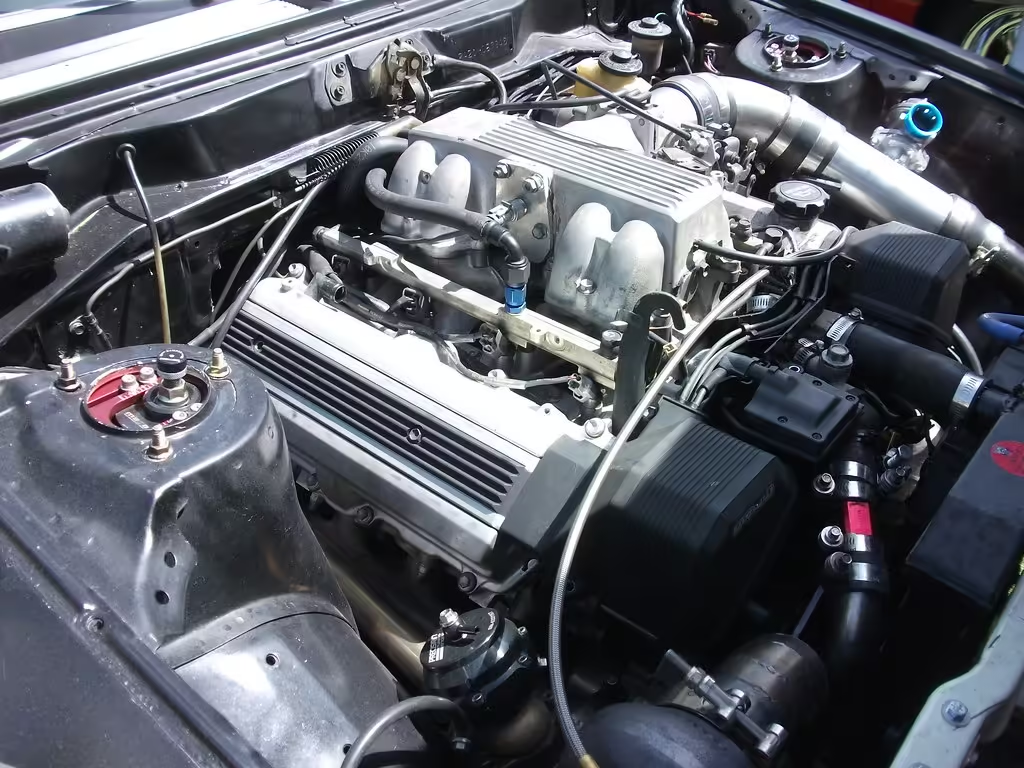Table of Contents
- With an output of 1,050 lb-ft of torque and a capacity of 18-liters, the Ford GAA was the company’s largest V8 engine ever.
- Ford modified their V12 prototype engine to become the GAA V8 tank engine, inspired by the Rolls-Royce Merlin.
- Ford’s GAA, which was unique to the 1940s and used in the Sherman tank, included the revolutionary design elements of an alloy block, flat-plane crank, and DOHC.
The GAA was Ford’s largest V8 ever and its largest V engine. Although it was used as a military powerplant in tanks for many years, the engine remains a remarkable design today.
Although the tank engine is old, gearheads from the 1940s and beyond will be familiar with the ‘Voodoo’ engine that powers the Ford Shelby Mustang GT350, which has many design cues including the GAA.
Unfortunately, it’s one of Ford’s most amazing V8s ever—one of the most powerful Mustangs it ever built—that was never installed in a Mustang. We briefly examine the features, design and history of the GAA, which won’t be replacing a powerful truck in 2024.

The Ford GAA 1,1100 CID V8 Was Ford’s Biggest Ever V8
The 18-liter V8 Ford used in its GAA had a 60-degree bank angle. Its aluminum block and heads, four valves per cylinder, two overhead cams and flat-plane crank give it a contemporary look by today’s standards. Even though the engine was built in the 1940s, it looks contemporary by today’s standards. Not only is it unique in countless ways, but the GAA is particularly intriguing because it has no chain or cambelt. Instead of a belt or chain, a gearing system was used to keep the crank and camshaft in sync, eliminating the possibility of the belt or chain breaking.
The engine delivers a massive 1,050 lb-ft of torque. It excelled as an engine for military applications, such as the Sherman line of tanks, which needed powerful motors to move their weight.
According to Engine Labs, 90% of the engine’s torque can be produced at 1,000 rpm. This engine would never be installed in a car because it weighed more than 1,000 pounds. Actually, the Rolls-Royce Merlin aircraft engine served as its primary inspiration.
Rolls-Royce produced the V12 Merlin engine, which was used in many fighters and bombers, including the Spitfire, Hurricane and Lancaster. The popularity and effectiveness of the Merlin made it the standard for Ford’s own V12 engine, which eventually became the GAA, but in a very different configuration.

The Ford GAA Was A Scaled-Back Rolls-Royce Merlin Engine At Heart
There are differing views on the origins of the GAA. In short, in response to the growing demand for aircraft engines, Ford chose to develop its own V12 aviation engine. The design of the Ford prototype was heavily influenced by the well-known and rich Rolls-Royce Merlin V12 engine, which served as a benchmark.
It’s interesting how the project ultimately took a different direction. The Navy rejected V12 engines, but luckily the Army wanted tank engines, meaning V8s.
Four of the engine’s twelve cylinders were deleted to create the V8, saving money on costs previously incurred in the V12 prototype and on tooling already purchased. The result is the eight-cylinder GAA 18-liter engine.
Although not flawless in design, Ford’s GAA engine was not the only one fitted to Sherman tanks. However, it was efficient and required less room than the tall, wide radial engines that are still in use, although some earlier Sherman types also used diesel engines.
The GAA’s relatively small size, power and reliability made it an excellent engine. In certain situations it even reverses on the battlefield. This is notable because it features features seen in the best V8 engines made today, such as the flat plane crank C8 found in the Chevy Corvette Z06’s LT6 V8 engine and the four-valve Voodoo V8 engine in the Shelby GT350. It also has an alloy block and heads.

The Ford GAA Was A Scaled-Back Rolls-Royce Merlin Engine At Heart
- The Ford V12 prototype had aviation in mind when it was created with direct inspiration from the Merlin.
- Demand for the V12 was high due to the Navy’s reliance on radial engines and other contract restrictions.
- Ford was approached by the Army’s Tank Corps when they needed a V8 engine to power their tanks.
- After removing 33% of the cylinders, Ford’s GAA was created, converting the V12 into a V8 while maintaining the same design.
- It was included in various M4 Sherman tank models, including the M4A3.

A Brief Look At The Sherman M4 Tank
With nearly 50,000 produced, the Sherman tank was the most widely used American tank of World War II. It is interesting to note that other nations like Britain, France, Russia and America also used it.
Built in 1942 and entered service in 1943, this vehicle would demonstrate reliability and efficiency due to its speed and agility, as well as its versatility in handling various tasks and situations. The repair was not too difficult.
Sadly, the Sherman’s superiority was short-lived as it was later superseded by more formidable tanks, such as the Tiger and Panther, but its strength was evident during its time in service. A wide range of engines were available in different variants, including GAA, radial engines and GM diesels.Engines The Ford GAA enabled Ford to provide the V8 engines Sherman needed and the company was able to use the V12 prototype, which was inspired by the Merlin, in their most notable V8 vehicle to date.
READ | WWII Warbird Jeep with custom modifications is incredible
READ | Poland’s Futuristic PL-01 Tank Cold Tank Design Futures


2 thoughts on “The largest displacement Ford V8 engine in history, which was used in WWII tanks”